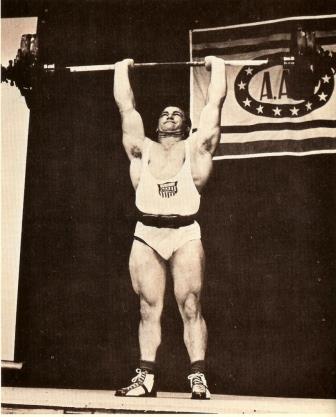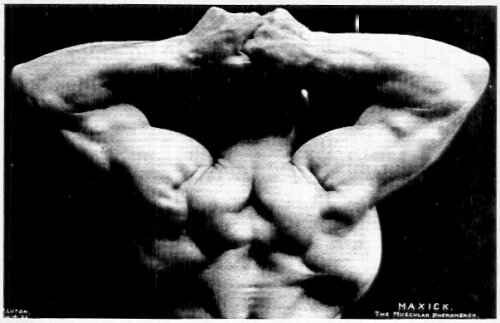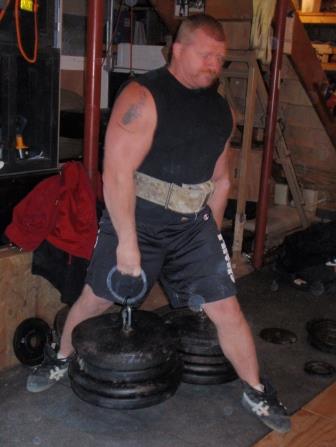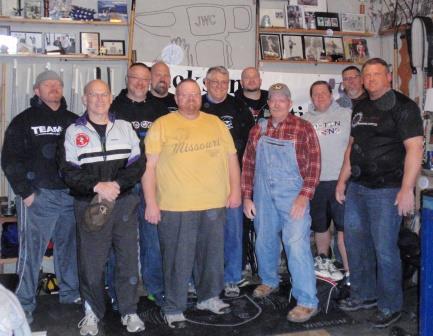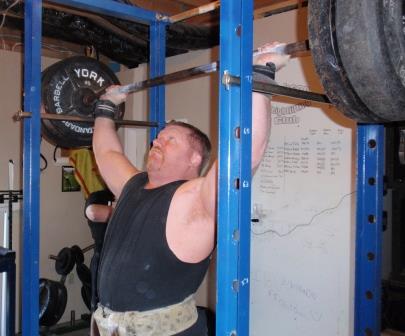Perfect Powerful Pulls
by John McKean
Audience chanting called a halt to the proceedings at the 1963 Senior National Weightlifting Championships. No, not due to a poor judging decision, nor a new record lift. Rather the mere appearance of a little known 181 pound wonder named Jim Dorn created this immediate stir. The uninformed in the crowd assumed him to be a bodybuilder, rather than the dedicated olympic lifting stylist that he was, yet everyone demanded to see him flex his wing like lats! Heck, even the normally gruff, stoic John Terpak later wrote that Dorn had “unquestionably the broadest back in the world for his height and weight”! Fortunately the MC of the evening was Bob Hoffman, who was more than happy to promote one of his York team members, and to plug his top selling power racks (on which Dorn trained exclusively)! Of course the packed auditorium went berserk when the 5’7″ phenomenon flexed those lats, seeming wider than he was tall.
What an all-rounder Jim would have made! In addition to a 315 pound press, 285 pound snatch, and a North American Championship title (among others), Dorn performed a 275 pound cheat curl (205 strict), a 670 pound parallel squat (with hands on thighs), and a 405 pound jerk off the rack. And when pushed into it by Coach Hoffman, later took the Mr. Pennsylvania crown. Hard to believe that this type of power and physique were built primarily with mostly single holds inside a power rack, using 8 key partial lifts!
As indicated in an early 60s Strength & Health story, Jim’s usual home training featured only these power rack holds and ONE SET OF ONE format: top press 520 X 1, eye level press 360 X 1, chin level press 520 X 1,quarter squat 1000 X 6, middle pull 420 X1, front squat (from bottom up) 390 X 3, deadlift (just off floor for the start) with shrug 670 X 1, and bench press (starting from a rack pin 4″ above chest) 470 X1. On each of the single rack holds, he held either just off starting pins, into a slightly higher rack pin, or maintaining a support (as in the top press and quarter squat) for 10 SECONDS. Oh yeah, he finished each session with a set of 6 in a slow stretching type of chin behind the neck. However, I’m convinced that it was his pulling HOLDS over that TIME, that created his awesome pulling power and super wide upper back!
I’ve written previously, of course, of the value of slightly moving isometrics & holds, but wish to put forth some pulling experiments I’ve been doing for a while that just may make this treacherous exercise a bit more user friendly! After all, none of us in the all-round bunch are getting any younger, and these heavy duty holds are nasty to one’s blood pressure! But, though mostly forgotten, we should strive to discover how to make such miraculous, short & concentrated rack routines work for us. We may never get the world record pulls and back structure of Bill March, Lou Riecke, or Serge Redding. In case you don’t know Serge, he used mostly standard olympic lift training, tho included one special pull iso — musta worked because at 5’8″ and up to 308# bwt, he did an official 502 pound WR press, a 401 snatch, and measured 65″ around the shoulders!! More on him in another story!! However, using TIME in holding a row, continental from thigh level, snatch grip pulls, etc., could mean a whole bunch of ‘Rounder records!
Now, what I’ve found, old gomer that I’m becoming (68 last Sunday! and his wife who is proofing this reminded him that he’s well into full bloom gomerhood!), is that I don’t need to explode head veins from a 10 to 12 second hold as twenty-something Dorn & March were doing. Instead, I separate my rack lifts into 2 sets of 2, with each hold into a slightly higher rack pin, lasting only 3 seconds. I still get in the all-important HOLD of 12 seconds, but have not come even close to passing out as I did in the old days (so that’s what happened to him y’all are saying!)! For instance, I’ll get a pretty hefty poundage on the strict row, pull to a pin 4″ above and hold for 3 seconds, lower and pull/hold for another 3 seconds, then rest for a few minutes and do the second set. By the way, if you don’t have access to a power rack, this same performance can be achieved with chains & “S” hooks over the bar to secure various pull positions, or even rig up a thick rubber bungee around one’s barbell!
It must be working – my poundages are going up, even at an age where gains should NOT be achieved, and the all-round pulling lifts are feeling much easier! I’m even noting a big increase in wideness these days – though I expect this is mostly from Marilyn’s fresh stacks of Christmas cookies, rather than extra muscle on the upper back!
